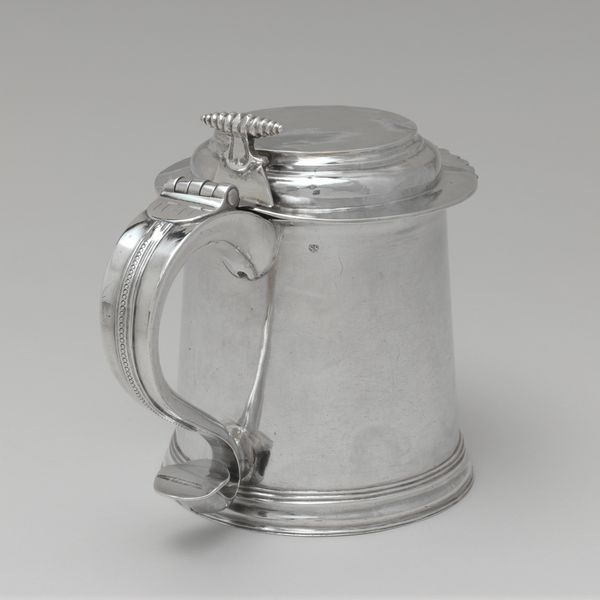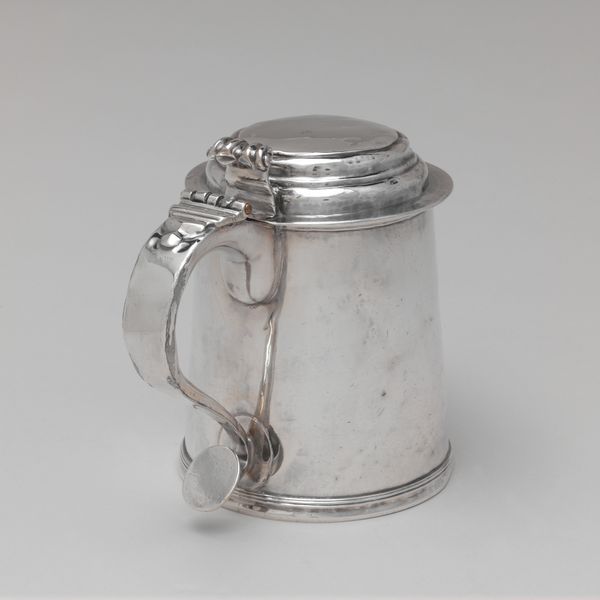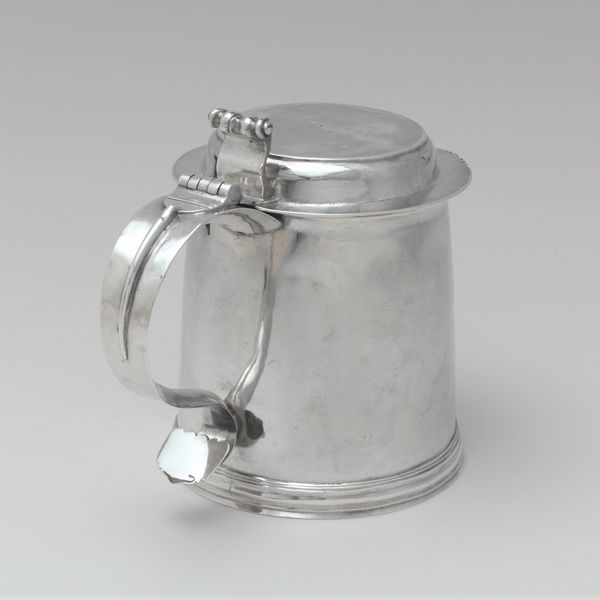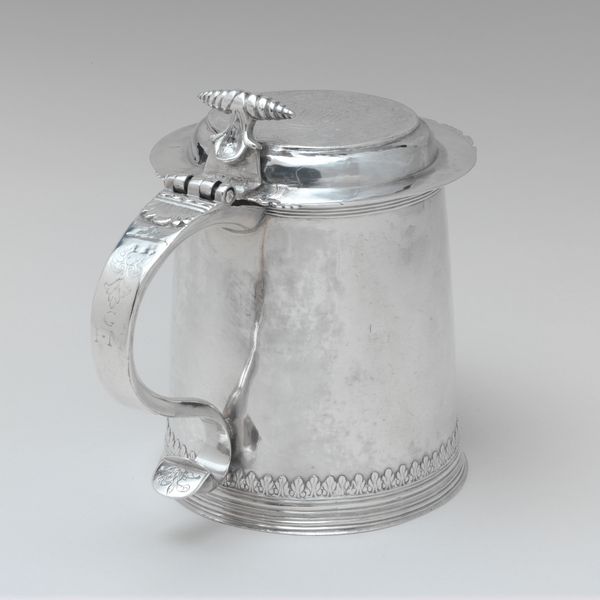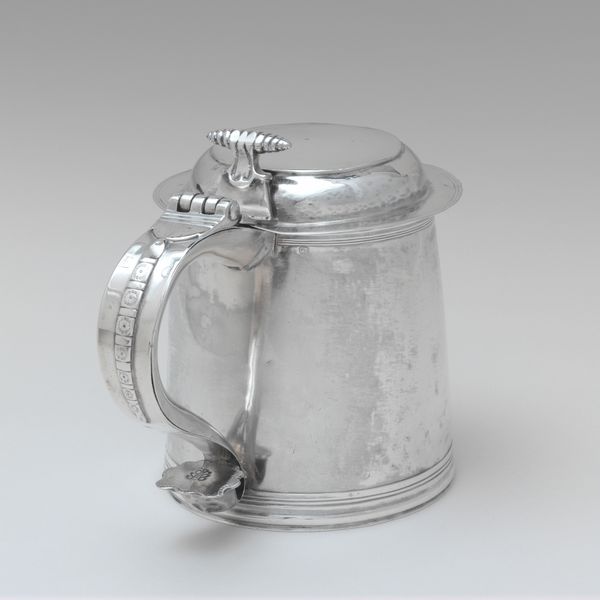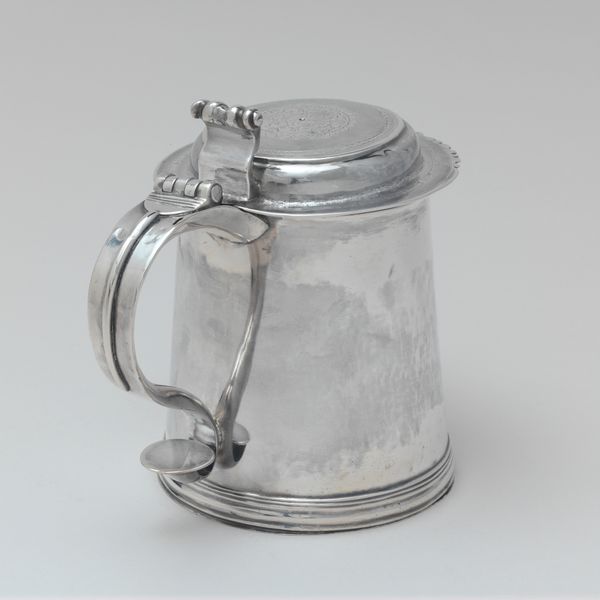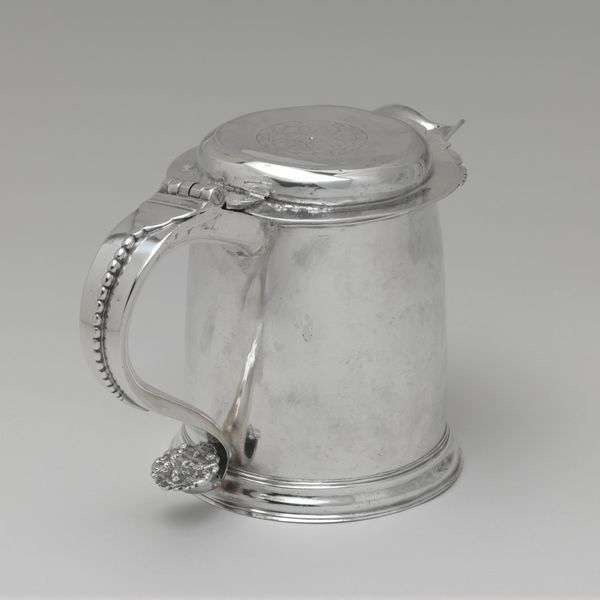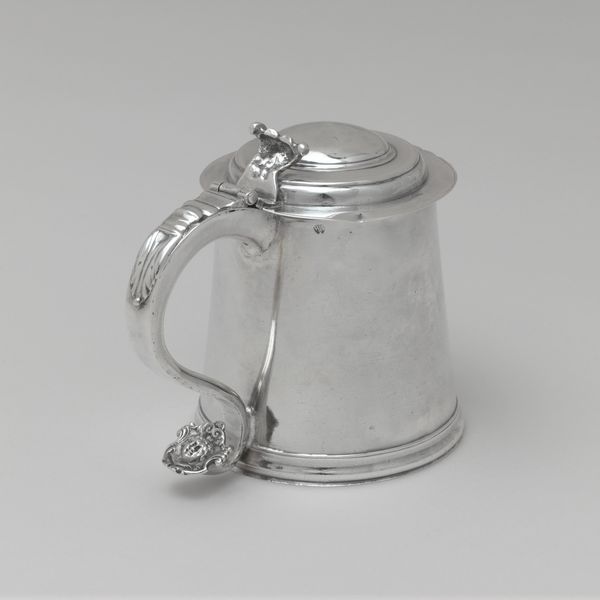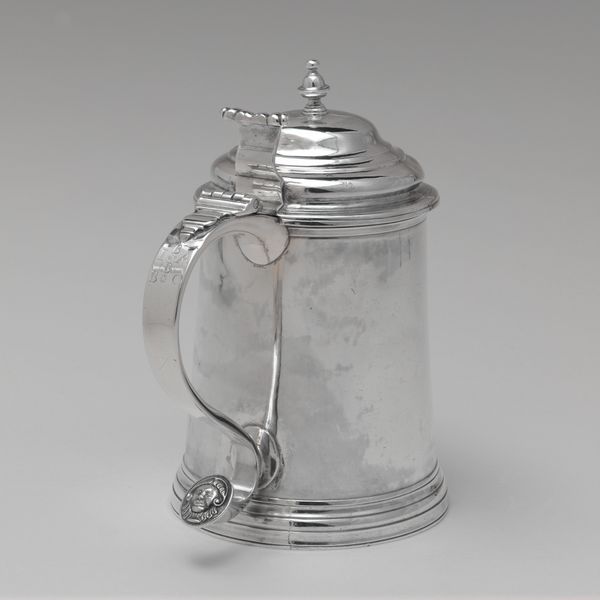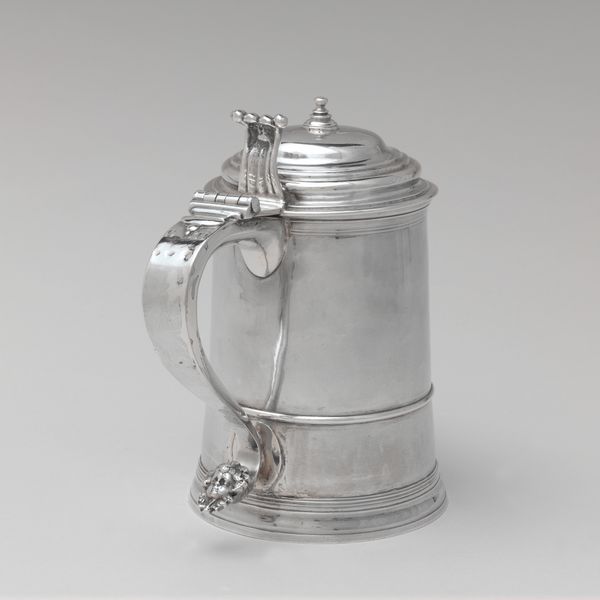
silver, metal
#
silver
#
baroque
#
metal
#
united-states
#
decorative-art
Dimensions: Overall: 7 3/4 x 8 5/16 in. (19.7 x 21.1 cm); 38 oz. 17 dwt. (1209 g) Lip: Diam. 4 11/16 in. (11.9 cm) Base: Diam. 5 5/8 in. (14.3 cm)
Copyright: Public Domain
Editor: Here we have a silver tankard, made in the United States sometime between 1750 and 1768 by Nicholas Roosevelt. It’s surprisingly austere. What can you tell me about this piece? Curator: Considering its era and the implied wealth associated with silver, that very austerity becomes intriguing. Who would commission such a plain piece? The Baroque style often luxuriates in excess. It invites the questions of function and ownership: Was this a deliberate choice reflecting the patron’s values, perhaps Quaker simplicity influencing design? Editor: So, it is less about aesthetic and more about social commentary. Curator: Precisely. We have to think about the labour involved in crafting silver – the skills of the silversmith, the cost of the metal, the access to materials and tools. Was this silver sourced locally? How does that impact our understanding of American craftsmanship versus reliance on European imports during this period? Think of the production and circulation chains involved. Editor: Interesting. I hadn’t considered the materials as much as just…shiny. So, who might have owned something like this? Curator: The absence of overt embellishment leads me to think about a consumer perhaps positioning themselves against ostentatious displays of wealth common within baroque tastes, aligning themselves with more moderate cultural and social values. Or maybe its simplicity helped make silver more commonplace and attainable. What do you think of that contrast, though - high craft employed for relatively simple form? Editor: I hadn't considered that someone in the 1700s might be simplifying wealth the way we might simplify technology today. It puts the craftsmanship into a different light! Curator: Absolutely. This tankard exemplifies that the value of art objects extends beyond their visual qualities, reaching deep into the societal conditions and modes of production that gave shape to the object. Editor: Thanks, that gives me a whole new perspective. I learned a lot. Curator: Me too; considering silver’s production tells an important story!
Comments
No comments
Be the first to comment and join the conversation on the ultimate creative platform.
